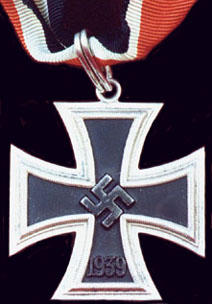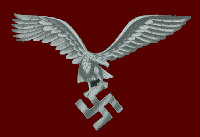|
|
|
 |
 |
Gallands Luftwaffe |
 |
 |
Oberst
Helmut Lent
Oberstleutnant
NJG 2
Air Victories 110 Kills
|
Oberstleutnant Helmut Lent On 18 December 1939, the
German naval radar station on Heligoland and the
Luftwaffe Freya installation on the island of Wangerooge
detected a large formation of hostile aircraft
approaching at a range of 113 kilometres. Lt Hermann
Diehi, in charge of the Freya, immediately advised the
Luftwaffe fighter Gruppen co-ordination centre, but at
this stage of the war communications were poor, and Diehi
was always being |
| This costly lesson for the RAF
taught it that daylight bombing was not possible even
with the theoretical protection of combined fire-power,
and the seeds were laid for the future night offensive.
In Germany it strengthened Goering's view that bombers
would not fly over the Reich, and among the fighter
pilots there was a firmly held belief that the war would
not last long. However, Ernst Udet had pre-warned Goering
that he should have a night fighter force just in case,
and on his insistence a handful of Arado 68s and Bf 109s
had been co-operating with searchlight units in a token
gesture. The action on 18 December involved several day
fighter pilots including Johannes Steinhof, Werner Streib,
Victor Moelders (brother of Werner) and Lent, who were
all to become night fighter aces, despite their
reluctance in 1940-41 to join the embryo night fighter
force. Lent achieved ace status during the Norwegian campaign when he shot down the Norwegian air force Gladiator of Sgt Per Schye. Soon after this, he and Kubisch had a narrow escape when they tore the undercarriage off their Bf 110 as they landed at Oslo-Fornebu whilst it was still being stoutly defended by Norwegian ground forces. Lent was greatly disappointed when he was posted to command the 6th Staffel of 11/NJG 1, and initially could not come to terms with the different technique of night fighting, wherein patience and the ability to stalk the foe until in a position of advantage were greatly different to the cut-and-thrust of the dogfight. Eventually, after two dozen sorties without success, he sought an interview with Major Falck, the Kommodore of NJG 1, and requested a return to day fighters, his reason being that he could not see at night! Falck rejected the request and in so doing sealed the fate of 102 bomber crews. lent strived for success and finally, on the night of 11-12 May 1941, on his 35th sortie, he finally brought down two Wellingtons.Success now followed success, and by the end of the year 18 more bombers, including his first two four-engined types, both Stirlings, had become his victims. Throughout 1942, now proudly wearing a Ritterkreuz to which the Oak Leaves were added in June, he roamed the night skies steadily adding to his total; a Halifax on 18 January 1943 brought him the honour of being the first night fighter pilot to score 50 victories. His next aim was to be the first to the magic century, and by July 1943 he had scored 65 among which was his first Mosquito. The following month he added the Swords to his decorations, and was promoted to the command of NJG 3. His century was reached on the night of 15-16 June 1944 when three Lancasters were brought down, and by the end of July he became the first night fighter ace to reach 100 night victories. This brought the award of the Diamonds, making him the first night fighter pilot to be so recognized. Oberstleutnant Lent has been credited with the invention of the infamous vertically firing cannons (Schriige Musik) that were fitted to many German night fighters and created havoc among British bombers, but this weapon was the work of Paul Mahle, an armourer who, in 1939, had been unceremoniously dumped off the wing of Lent's Bf 110 as he hurried to take off in pursuit of the Wellingtons, so there is a tenuous connection between the two men! On 5 October 1944, Lent was landing his Bf 110 at paderborn when an engine cut out and, in trying to regain height on only one, he hit a power cable. The ace with 110 kills to his name survived the crash, which killed his crew, but two days later he succumbed to his injuries. Thus died a reluctant night fighter pilot who ended up with the second highest score in that arena. |